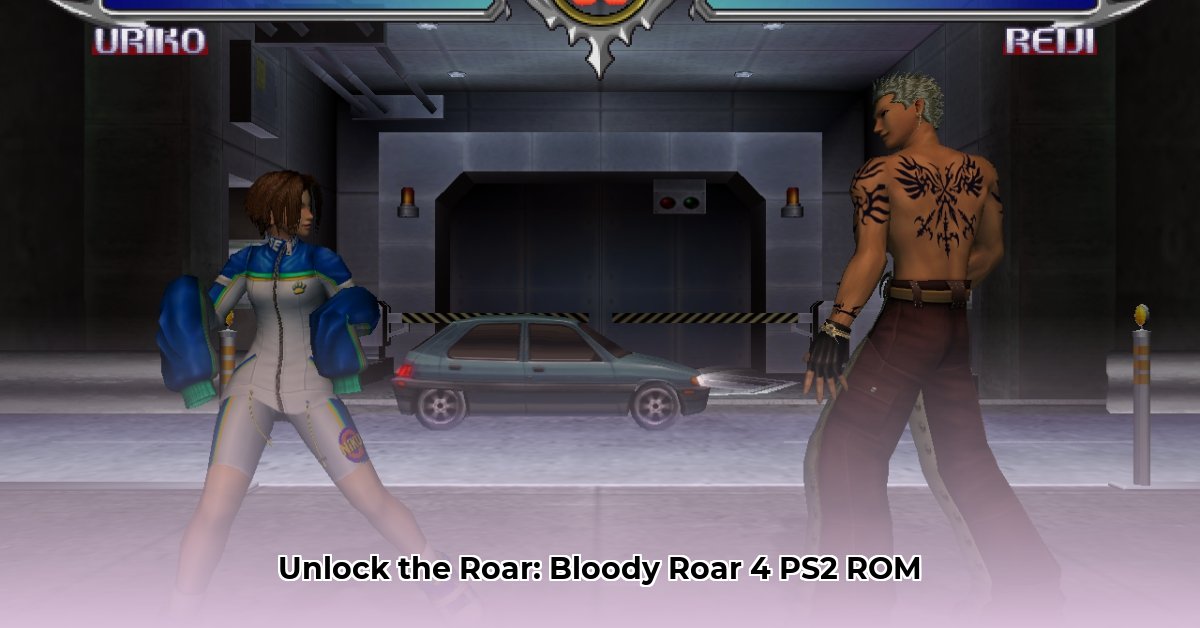
The Complexities of Bloody Roar 4 PS2 ROM Preservation
Finding a Bloody Roar 4 PS2 ROM online is remarkably easy. Numerous websites offer downloads, yet this accessibility raises significant legal and ethical questions regarding the preservation of video game history. This article delves into the intricate challenges surrounding Bloody Roar 4 PS2 ROM preservation, exploring the legal framework, technical hurdles, and ethical considerations involved. We will examine established archives like the Internet Archive, contrast them with less transparent sources like CoolROM.com, and analyze potential solutions for a sustainable future in video game preservation. The ease of access belies a complex issue with consequences that far outweigh a simple download.
The Preservation Landscape: Archives, ROM Sites, and Metadata
The digital preservation landscape is a complex interplay of well-intentioned organizations and less regulated sources. The Internet Archive, for example, strives to meticulously preserve digital artifacts, including video games, with a focus on comprehensive metadata (data about the data) and long-term storage. However, even this approach has limitations in terms of legal compliance and the ever-evolving technological landscape. In contrast, sites like CoolROM.com offer readily available downloads but often lack the stringent metadata and legal awareness that characterize more established archives. This difference highlights the critical need for standardized practices and ethical guidelines in video game preservation.
How can we ensure the long-term survival of Bloody Roar 4 and other classic games without jeopardizing copyright or encouraging illegal activities? The answer requires a multifaceted approach.
Legal and Ethical Considerations: Navigating the Gray Areas
Copyright law presents a considerable hurdle in Bloody Roar 4 PS2 ROM preservation. The distribution of ROMs, even for preservation purposes, exists in a legal gray area. The line between personal archiving for legitimate preservation and commercial exploitation is remarkably blurred. The legal implications are far from straightforward and involve ongoing debate surrounding fair use exceptions. Downloading a ROM for personal use could still be considered a copyright infringement, underscoring the ethical concerns and potential legal risks involved with unregulated ROM sharing. The preservation of our digital gaming heritage must respect the legal rights of developers and publishers while ensuring accessibility for future generations.
Technical Challenges: Emulation, Compatibility, and Data Loss
Preserving digital games involves more than simply storing files. Emulation is crucial for playing PS2 games on modern hardware. However, emulators vary significantly in their compatibility with different ROMs. A ROM functioning flawlessly on one emulator might be riddled with errors on another. Furthermore, there's the constant threat of data corruption or loss; digital decay is a real phenomenon. A single corrupted bit can render a game unplayable. Robust backup strategies using multiple storage methods—external hard drives, cloud services, etc.—are essential for mitigating this risk. These technical challenges underscore the need for careful consideration and robust solutions to protect this digital heritage.
What are the practical measures one can take to safeguard Bloody Roar 4 and other PS2 ROMs against data loss and corruption?
The Future of Preservation: Collaboration and Technological Solutions
The most effective path forward in video game preservation involves collaboration. A cooperative approach involving ROM sites, game developers, preservationists, and enthusiasts could lead to shared metadata standards, improving accessibility and ensuring consistency. This may create legal channels for accessing legacy games that are no longer commercially available. Some experts propose using blockchain technology to create tamper-proof archives, adding another layer of security and longevity to the preservation process. The ultimate goal is sustainable access to video game history, circumventing legal pitfalls and technological barriers. Such collaboration is not simply desirable; it is crucial to protect our collective gaming heritage.
Conclusion: A Call for Collective Action
Preserving Bloody Roar 4 PS2 ROMs, and indeed the entire catalog of classic video games, presents formidable legal, ethical, and technical challenges. The path forward necessitates a nuanced approach that balances the rights of copyright holders with the desire to preserve gaming history for future generations. Collaboration between stakeholders, the adoption of robust technical solutions, and a clear understanding of the legal landscape are crucial steps toward creating a sustainable future for video game preservation. The journey requires concerted effort and innovation to safeguard this invaluable aspect of our cultural heritage.
Key Takeaways:
- The legal status of downloading and distributing PS2 ROMs, including Bloody Roar 4, remains ambiguous, prompting ethical considerations.
- Successful preservation necessitates robust technical strategies to handle emulation compatibility and data corruption.
- Collaborative efforts among developers, archivists, and enthusiasts are crucial for establishing sustainable preservation practices.